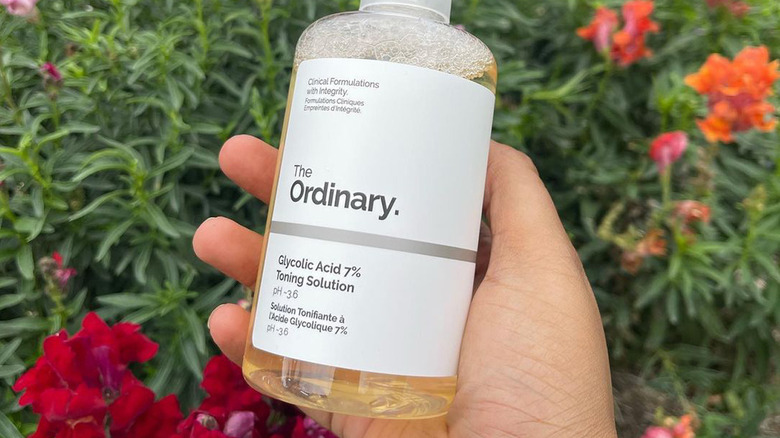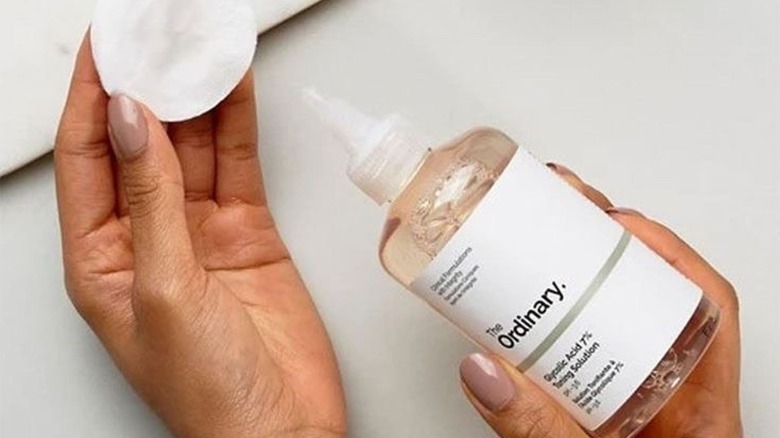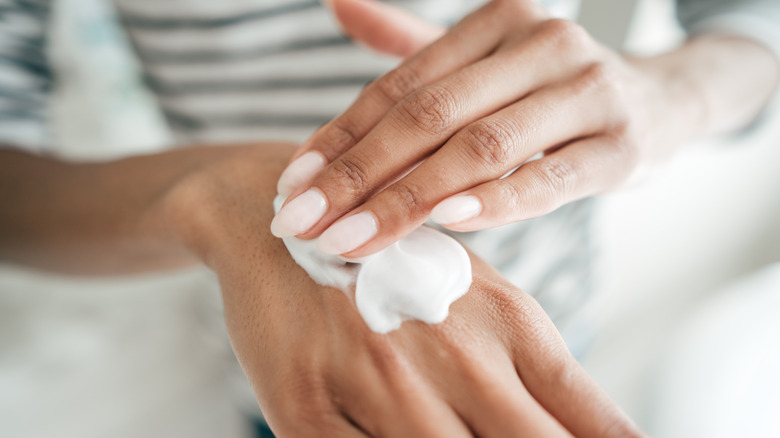Self-Tan Stain Your Hands? Easy Removal Hack Uses A Skincare Product You Probably Already Have
Getting the perfect self-tan comes with lots of practice. While you're on your way to becoming a pro, you may accidentally wake up to find that your body looks great, but your hands look orange. If this happens to you, don't worry — there's an easy fix. All you need is glycolic acid; it's a popular skincare product, so you may already have it at home. It's a chemical exfoliator that will help slough the self-tanner off your hands.
It's common to accidentally stain your hands with self-tanner because the skin reacts differently in this area of your body — it'll absorb more product and color faster. The same thing happens to your feet. Plus, your hands have more crevices for the self-tan to fall into and accentuate with the darker color, which can make your palms look orange or dirty. Luckily, you won't have to walk around with your hands looking like this for too long if you use some glycolic acid. Here's what you should know before giving it a try.
Glycolic acid exfoliates the stained skin
Glycolic acid is the savior to your tan-stained hands. It works so well because it's an alpha-hydroxy acid that chemically exfoliates the top layer of the skin. This is different from BHAs, which work to remove dead skin cells from inside your pores. When you apply AHAs, they slough off the stained layer of your hands in an even layer, making it better than a physical exfoliate that may leave you looking patchy. Net-A-Porter explains that glycolic acid also breaks down DHAs, the active ingredient in most self-tanners, so the stains are gone quickly.
It's best to swipe the glycolic acid on before bed — that way, you won't have to wash your hands anytime soon or go out in the sun, since one of its side effects is making your skin more susceptible to sunburns, according to WebMD. During this process, it's essential to wear SPF daily, not only for protection but also so you don't risk the self-tan stains getting darker.
As with any new skincare product, speak with your doctor if you have any concerns, and start slow — put the glycolic acid on only a few times a week at first. Then, you can increase how often you use it until your hands return to normal. You don't want to immediately start applying it every day because you can easily over-exfoliate your skin; signs that you're using it too often are dry, red hands that may feel rough or scaly.
How to prevent tan-stained hands
You can also take a few extra steps to prevent your hands from getting stained by a self-tanner — then, you won't have to worry about going through the process of removing it.
Before you break out the tanner, swipe your preferred moisturizer across your hands, but don't rub it all in. By putting on lotion, you'll create a thin layer over your skin so it doesn't absorb as much of the tan. (Following this step also helps prevent your tan from becoming streaky.) However, you can't use an oil-based moisturizer for this step, as it would completely block the tan from working instead of diluting it.
Another easy step to avoiding orange hands is to put on a tanning mitt. Forgetting this very important tool will leave your hands covered in way too much product while you're applying tanner to your body. When it's time to do your hands, take off the mitt. You can either buff in the tanner left on the glove or add only a pea-sized amount of product if you feel like you need more. Finish by washing your hands with soap and water to remove any excess and keep it from setting into your skin — that way, you may not even need glycolic acid to come to the rescue.


